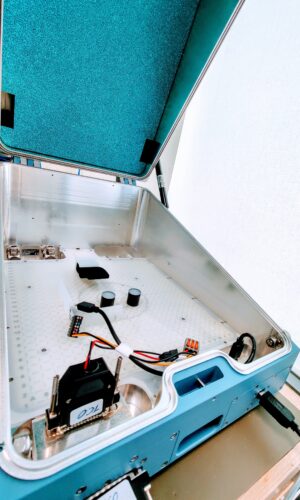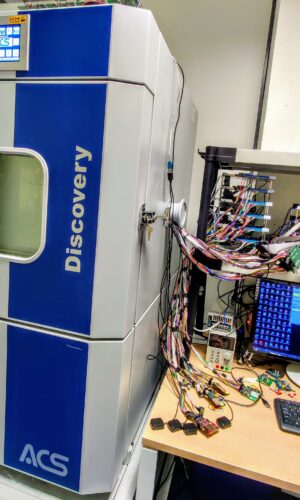Governments around the world are looking for more convenient ways to provide mobility to citizens. Car sharing became a buzzword in fleet management businesses, describing the transformation in the mobility overall. It reduces the urge for owning a car and helps to contribute to the development of a greener and more sustainable planet. Responding to this demand, transport telematics companies must adapt and adjust product portfolios as well.
Since Ruptela is working with car-sharing clients locally and globally, we are already shaping this field with experts working alongside us. Meet Arnoldas, one of them, who is leading business development with car sharing in mind.
Some studies declare that 1 car-sharing vehicle can replace up to 13 private cars.
What are the reasons that we are moving from a society where owning a car was one of the most important things to not having one at all?
There are multiple reasons, but it’s worth mentioning two – new social habits and environmental concerns – that influence the development of the shared economy concept in general.
First, we should look at Millennials and Gen Z nowadays – wishing to be flexible, sometimes being afraid of long-term commitments, and living their days faster than any previous generation has ever seen. Those are the main factors why shared economy businesses like Uber or Airbnb have such user growth and success nowadays.
Along the same lines, car sharing perfectly matches requirements for this part of the society – no commitment to owning your car, flexibility to use the car whenever you need, easy accessibility, and no headache thinking about parking fees or annual maintenance.
Second, we do see evident changes in our environment and increasing air pollution; thus, people want to contribute by taking specific action. In terms of transport, shared mobility helps to have less traffic and congestion by reducing the number of cars on the road. Some studies declare that 1 car-sharing vehicle can replace up to 13 private cars. People start to think about the future more responsibly and adjust their habits accordingly.
How are cities around the world adapting?
There are many good examples of how cities are promoting car sharing, especially the electrical version of it. For instance, Singapore launched the “Electric Vehicle (EV) Car-Sharing Programme” with more than 1000 electric vehicles and around 2000 charging points across the city. The downtown of Madrid, the capital city of Spain, is now accessible for electric or hybrid car-sharing cars only. That’s how Madrid is promoting an approach of being greener and having a town with zero-emission fleets. Another example of Hamburg, which provides free parking places or smaller parking fees for electric vehicles. Thus, it attracts car-sharing companies, which can cut costs on parking fees.
Car manufactures must rethink business flow and focus. How do they react to this inevitable change?
Well, car manufacturers understand that decreasing car ownership will have an impact on their businesses, so they are also becoming critical players in this industry. For example, BMW and Daimler joined forces by merging their car-sharing companies and launched the ShareNow joint venture. Now it has more than 3 million users in different cities across Europe.
Another example is Volkswagen, which has the most significant concentration of electric vehicles in one place – 1500 cars in Berlin. Furthermore, they are planning to launch services in 8 new cities in 2020. That’s big! In my opinion, car manufacturers and car rental companies will become leading players dominating the car-sharing industry due to their experience in this field and understanding of the customer needs.
We can see many new names joining the shared mobility game. What are the main factors they have to take into account to stay competitive?
In my opinion, three minor pillars can help car-sharing companies to stand out in front of others – accessibility, sustainability, and uniqueness.
Accessibility – most of the time there are enough cars available, so you don’t have to walk long distances. Again, it’s important for Millennials and Gen Z who want to use service immediately.
Another thing related to accessibility is the flexibility to change short-term rent into longer rent, meaning that you can easily use a vehicle for an extended period if plans have changed. Some car-sharing companies introduced multi-city access where you can pick a car in one city and leave it to another town. I do believe this will become quite a significant advantage for some players.
Sustainability – as I said before, people want to contribute to the greener economy and the reduction of carbon imprints. Electric vehicles enable people to act responsibly and show that each of us can participate in shaping a brighter tomorrow. There is a car-sharing company called “Spark” in Lithuania, and its fleet consists of only electric cars. It is a vital factor for a considerable part of society (including me) who are choosing between different car-sharing companies.
Uniqueness – there are plenty of similar companies in the business, but some of them play this game way better than others even when they are offering the same or similar services. Looking at the current business landscape, you have to stand out and stick into the minds of your customers. There can be various ways to achieve this – engaging and playful advertising campaigns, special customer loyalty programs, and even the design of your cars. For example, there is another car-sharing company in Lithuania called “Citybee,” which transforms some of their vehicles during Christmas to look like Rudolph, for example. It’s nice because it gets attention from people and from media, which converts it to free marketing.
Now transport telematics companies must adapt as well. What kind of solutions would make car-sharing businesses life easier?
I believe that car-sharing companies must rethink their businesses – utilize fleet in most popular locations, manage rentals by giving different price models, and focus on customer attraction with their sales strategies. The rest should be managed by experts developing the appropriate technological solutions. This technical part of the car-sharing technical is quite complicated since it includes reliability, stability, and flexibility for both: software and hardware. We take these pillars very seriously at Ruptela since our goal is to be a reliable technological partner for any car-sharing or car rental company.
How does a person who chooses shared mobility would be described?
It is very difficult to describe a typical user of such a service. There is no actual definition of one. It depends on many factors, for instance, the type of job one has, the residence area -whether it’s a city center or the outskirts of the city—even the hobbies – everything matters when you think of modern mobility.
The user of shared mobility is both, the shaper of the service as well as the adopter of it. Now people have the freedom to choose from various mobility options such as the type of transportation (e.g., vehicle, scooter, bike) as well as the quality of it – sometimes, you just want to ride that shinning brand new car. Of course, contribution to the fight against global warming is also in the picture – thinking about tomorrow as a better and greener place for us to live. That’s how I see it.
Visit: https://www.ruptela.com/





















